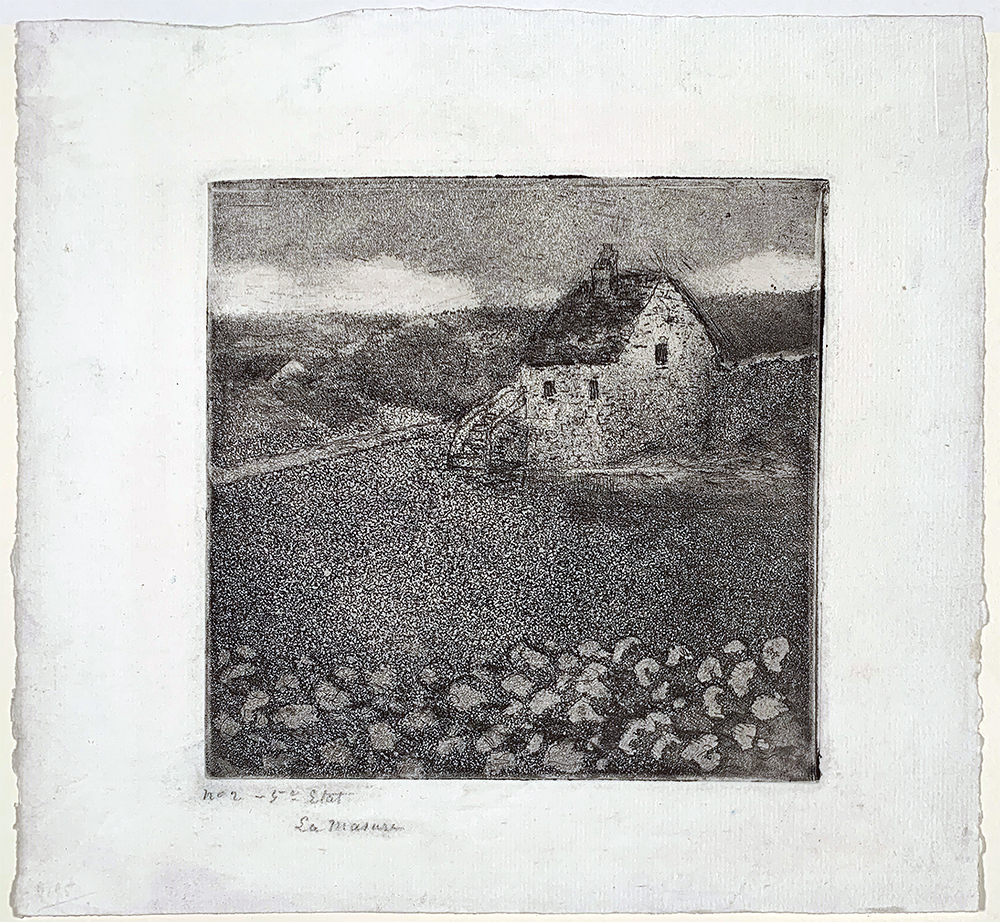
In this photogravure of expanding circles populated by dots, curving lines, and staticlike fields of gray, the abstracted imagery seems tantalizingly familiar, evoking an array of associations like a view under a microscope or a skyscape of planetary bodies. In fact, Neelon Crawford’s Reconnaissance I (1987) is the first of a series of four prints that were inspired by a found 1946 aerial photo of nuclear testing at Bikini Atoll.
Seeking in the midst of the Cold War to answer the question, “What would World War III look like from the Space Shuttle?” Crawford fed the photo into a digitizer to repeatedly manipulate and rework it using his Mac computer, an Image Writer printer, tracing paper, and his darkroom. With its dot matrix origins viewed at the remove of the twenty-first century, what was once the product of cutting-edge technology now functions almost as time capsule, a seeming obsolescence further complicated by Crawford’s choice to employ the nineteenth-century photogravure process in his final treatment of the image.
Crawford (born 1946) achieved renown as an experimental filmmaker in the 1970s; the Museum of Modern Art celebrated his works of that era with a 2021 retrospective. However, he is also known for being the son of Ralston Crawford (American, born in Canada, 1906 – 1978), a painter and photographer who was the only artist present at Bikini Atoll in 1946 to witness the nuclear weapons test. The shared subject matter of father and son gives the work an inter-generational relevance: although the technological tools employed by each may vary vastly, the threat depicted remains steady.
— Lauren Turner, Associate Curator for Contemporary Art and Special Projects
Image Credit:
Neelon Crawford, American, born 1946, Reconnaissance I, 1987, photogravure, sheet: 30 × 22 1/2 in. (76.2 × 57.2 cm). Ackland Fund, 2023.10. © Neelon Crawford


